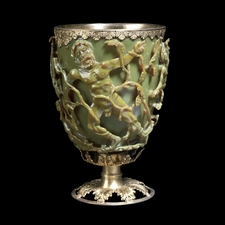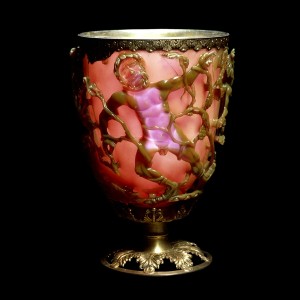As you might expect from the US National Institute of Standards and Technology (NIST) this research concerns techniques for measurements. From an August 15, 2019 news item on Nanowerk (Note: Links have been removed),
Tiny nanoparticles play a gargantuan role in modern life, even if most consumers are unaware of their presence. They provide essential ingredients in sunscreen lotions, prevent athlete’s foot fungus in socks, and fight microbes on bandages. They enhance the colors of popular candies and keep the powdered sugar on doughnuts powdery. They are even used in advanced drugs that target specific types of cells in cancer treatments.
When chemists analyze a sample, however, it is challenging to measure the sizes and quantities of these particles — which are often 100,000 times smaller than the thickness of a piece of paper. Technology offers many options for assessing nanoparticles, but experts have not reached a consensus on which technique is best.
In a new paper from the National Institute of Standards and Technology (NIST) and collaborating institutions, researchers have concluded that measuring the range of sizes in nanoparticles — instead of just the average particle size — is optimal for most applications.
…
An August 14, 2019 NIST news release (also received via email and on EurkAlert), which originated the news item, delves further into the research,
“It seems like a simple choice,” said NIST’s Elijah Petersen, the lead author of the paper, which was published today in Environmental Science: Nano. “But it can have a big impact on the outcome of your assessment.”
As with many measurement questions, precision is key. Exposure to a certain amount of some nanoparticles could have adverse effects. Pharmaceutical researchers often need exactitude to maximize a drug’s efficacy. And environmental scientists need to know, for example, how many nanoparticles of gold, silver or titanium could potentially cause a risk to organisms in soil or water.
Using more nanoparticles than needed in a product because of inconsistent measurements could also waste money for manufacturers.
Although they might sound ultramodern, nanoparticles are neither new nor based solely on high-tech manufacturing processes. A nanoparticle is really just a submicroscopic particle that measures less than 100 nanometers on at least one of its dimensions. It would be possible to place hundreds of thousands of them onto the head of a pin. They are exciting to researchers because many materials act differently at the nanometer scale than they do at larger scales, and nanoparticles can be made to do lots of useful things.
Nanoparticles have been in use since the days of ancient Mesopotamia [emphasis mine], when ceramic artists used extremely small bits of metal to decorate vases and other vessels. In fourth-century Rome, glass artisans ground metal into tiny particles to change the color of their wares under different lighting. These techniques were forgotten for a while but rediscovered in the 1600s by resourceful manufacturers for glassmaking [emphasis mine] again. Then, in the 1850s, scientist Michael Faraday extensively researched ways to use various kinds of wash mixes to change the performance of gold particles.
Modern nanoparticle research advanced quickly in the mid-20th century due to technological innovations in optics. Being able to see the individual particles and study their behavior expanded the possibilities for experimentation. The largest advances came, however, after experimental nanotechnology took off in the 1990s. Suddenly, the behavior of single particles of gold and many other substances could be closely examined and manipulated. Discoveries about the ways that small amounts of a substance would reflect light, absorb light, or change in behavior were numerous, leading to the incorporation of nanoparticles into many more products
Debates have since followed about their measurement. When assessing the response of cells or organisms to nanoparticles, some researchers prefer measuring particle number concentrations (sometimes called PNCs by scientists). Many find PNCs challenging since extra formulas must be employed when determining the final measurement. Others prefer measuring mass or surface area concentrations.
PNCs are often used for characterizing metals in chemistry. The situation for nanoparticles is inherently more complex, however, than it is for dissolved organic or inorganic substances because unlike dissolved chemicals, nanoparticles can come in a wide variety of sizes and sometimes stick together when added to testing materials.
“If you have a dissolved chemical, it’s always going to have the same molecular formula, by definition,” Petersen says. “Nanoparticles don’t just have a certain number of atoms, however. Some will be 9 nanometers, some will be 11, some might be 18, and some might be 3.”
The problem is that each of those particles may be fulfilling an important role. While a simple estimate of particle number is perfectly fine for some industrial applications, therapeutic applications require much more robust measurement. In the case of cancer therapies, for example, each particle, no matter how big or small, may be delivering a needed antidote. And just as with any other kind of dosage, nanoparticle dosage must be exact in order to be safe and effective.
Using the range of particle sizes to calculate the PNC will often be the most helpful in most cases, said Petersen. The size distribution doesn’t use a mean or an average but notes the complete distribution of sizes of particles so that formulas can be used to effectively discover how many particles are in a sample.
But no matter which approach is used, researchers need to make note of it in their papers, for the sake of comparability with other studies. “Don’t assume that different approaches will give you the same result,” he said.
Petersen adds that he and his colleagues were surprised by how much the coatings on nanoparticles could impact measurement. Some coatings, he noted, can have a positive electrical charge, causing clumping.
Petersen worked in collaboration with researchers from federal laboratories in Switzerland, and with scientists from 3M who have previously made many nanoparticle measurements for use in industrial settings. Researchers from Switzerland, like those in much of the rest of Europe, are keen to learn more about measuring nanoparticles because PNCs are required in many regulatory situations. There hasn’t been much information on which techniques are best or more likely to yield the most precise results across many applications.
“Until now we didn’t even know if we could find agreement among labs about particle number concentrations,” Petersen says. “They are complex. But now we are beginning to see it can be done.”
I love the reference to glassmaking and ancient Mesopotamia. Getting back to current times, here’s a link to and a citation for the paper,
Determining what really counts: modeling and measuring nanoparticle number concentrations by Elijah J. Petersen, Antonio R. Montoro Bustos, Blaza Toman, Monique E. Johnson, Mark Ellefson, George C. Caceres, Anna Lena Neuer, Qilin Chan, Jonathan W. Kemling, Brian Mader, Karen Murphy and Matthias Roesslein. Environmental Science: Nano. Published August 14, 2019. DOI: 10.1039/c9en00462a
This paper is behind a paywall.

